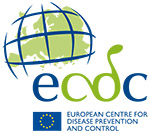The European Union Reference Laboratory for Public Health on Vector-borne Viral Pathogens (EURL-PH-VBV) is one of nine European Union Reference Laboratories for Public Health designated by the European Commission (EC). The EURL-VBV-PH has been operational since 1 January 2025 and is part of the Emerging and Vector-borne Disease network (EVD-Net) at the European Centre for Disease Prevention and Control (ECDC).
The EURL-PH-VBV plays a crucial role in supporting National Expert Laboratories (NEL), the European Centre for Disease Prevention and Control (ECDC), and the European Commission (EC) in addressing arboviruses, for example, viruses transmitted by ticks, mosquitoes, sandflies, and midges. Arboviruses exert an increasing pressure on health globally.
The EU (European Union )-funded project on EURL-PH-VBV provides comprehensive scientific and technical support on detection and characterisation methods, interpretation of results in line with EU laboratory case definitions, laboratory surveillance, outbreak preparedness, and response strategies. A key focus of the EURL-PH-VBV is to promote uniformity in laboratory testing and activities across the EU to ensure the generation of standardised data.
To achieve its objectives, the EURL-PH-VBV project shares reference materials and diagnostics, facilitates training programmes, organises twinning visits, and conducts external quality assessments. The EURL-PH-VBV plays a vital role in enhancing preparedness across the EU. Its collaborative efforts ensure a harmonised approach to laboratory practices and surveillance, contributing to more effective management and control of arbovirus-related public health threats.
EURL Vector-borne Viral Pathogens is funded by the European Union's EU4Health Programme under Grant Agreement 101194797.
Funded by the European Union. Views and opinions expressed are however those of the author(s) only and do not necessarily reflect those of the European Union or the European Health and Digital Executive Agency. Neither the European Union nor the granting authority can be held responsible for them.
The EURL-PH-VBV has been designated for a period of seven years under the coordination of ECDC.
The kick-off meeting was held 10 February 2025. In the first years, the EURL will focus on specific activities around two important threats for public health in the EU (European Union )/EEA: emerging Aedes-borne viruses with demonstrated potential for local transmission and Crimean-Congo haemorrhagic fever (CCHFV) emergence.
Contact
For more information, please send us an e-mail EURL-PH-VBV@rivm.nl





